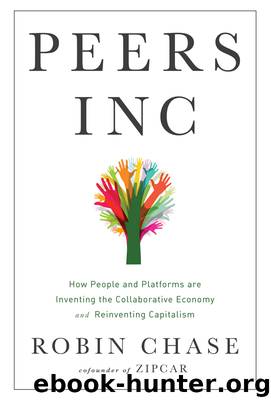Peers Inc by Robin Chase

Author:Robin Chase
Language: eng
Format: epub
Publisher: PublicAffairs
Taxi regulations are full of outdated rules; hence the success of Uber and Lyft. Washington, D.C.’s Taxicab Commission chairman, Ron Linton, said that “Uber’s service is illegal because its drivers do not give passengers a receipt as they exit.”11 That’s true only if you define a receipt as a piece of paper. Everyone who uses these services pays by credit card from a preestablished online account and receives an email receipt in real time, pretty much as they close the door of the vehicle. In Miami, no limousine can legally respond to a call in less than fifteen minutes, in order to protect the market for cabs you hail in the street. In New York City until very recently, it was illegal to measure distance for fares with anything other than the one city-approved device, something that might have made sense before the existence of smartphones and GPS (not approved). London started regulating hackneys (the legal word to describe the combination of driver plus conveyance for hire) in 1636—almost four hundred years ago!12 The number of carriages was limited to fifty back then. Since 1865, the city has required that all drivers pass “the Knowledge,” a test that ensures they actually know their way around London—all the streets, all the sights, all the best routes. This raised the status of the cabbie profession (relative to what is in America, for example), and drivers take great pride in their knowledge. The millions of London passengers who have since traveled efficiently from point A to point B are surely appreciative. Today, “[Knowledge] applicants will usually need at least twelve ‘appearances’ (attempts at the final test), after preparation averaging 34 months, to pass the examination.”13 Today, of course, we also have GPS and smartphone apps. The taxi drivers protesting that June in London should really have been protesting against their taxi licensing commissions for having such a costly—and outdated—requirement.
As Dan pointed out to me, “Regulators think that by exerting more control, they will increase compliance. At some point, the opposite is true, a point you may see as counterintuitive. The heavy-handed rule maker is fighting the participants.” At a certain point many will choose to break the rules and go off the grid—like the subset of Uber drivers who were formerly part of the regulated industry. Dan continues, “At this point, the benefits of all the rules are lost, and best practices can’t spread, as they are hidden from central authority (or a platform). This is known as ‘shadow IT’ in the tech world, and as ‘black markets’ in economic terms. Worse still, these limits constrain solution possibilities, impacting creativity, innovation, and agility.” The graph is equally instructive if we use it to think about how much structure to use in platform building, as discussed in Chapter 6. Structure is necessary to derive benefit. If it doesn’t offer structure, it isn’t a platform and isn’t helping organize things. That said, the more structure (constraint), the fewer people will be interested in using it.
Download
This site does not store any files on its server. We only index and link to content provided by other sites. Please contact the content providers to delete copyright contents if any and email us, we'll remove relevant links or contents immediately.
International Integration of the Brazilian Economy by Elias C. Grivoyannis(90813)
The Radium Girls by Kate Moore(11921)
Turbulence by E. J. Noyes(7935)
Nudge - Improving Decisions about Health, Wealth, and Happiness by Thaler Sunstein(7615)
The Black Swan by Nassim Nicholas Taleb(7010)
Rich Dad Poor Dad by Robert T. Kiyosaki(6399)
Pioneering Portfolio Management by David F. Swensen(6226)
Man-made Catastrophes and Risk Information Concealment by Dmitry Chernov & Didier Sornette(5921)
Zero to One by Peter Thiel(5685)
Secrecy World by Jake Bernstein(4643)
Millionaire: The Philanderer, Gambler, and Duelist Who Invented Modern Finance by Janet Gleeson(4374)
The Age of Surveillance Capitalism by Shoshana Zuboff(4209)
Skin in the Game by Nassim Nicholas Taleb(4161)
Bullshit Jobs by David Graeber(4094)
The Money Culture by Michael Lewis(4076)
Skin in the Game: Hidden Asymmetries in Daily Life by Nassim Nicholas Taleb(3929)
The Dhandho Investor by Mohnish Pabrai(3698)
The Wisdom of Finance by Mihir Desai(3650)
Blockchain Basics by Daniel Drescher(3506)
